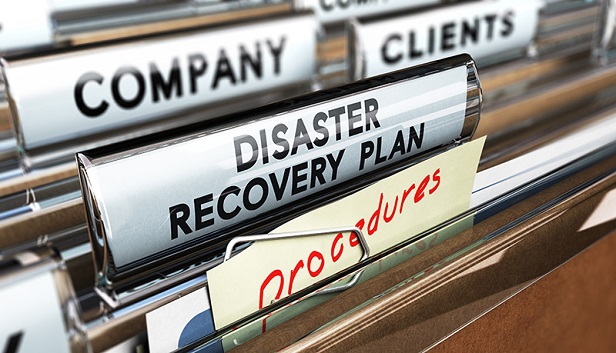
Today, New York Financial Services Superintendent Maria T.Vullo announced that the Department of Financial Services (DFS) hasissued updated disaster response and recovery plan requirements forall insurance companies licensed to conduct business in New YorkState.
|These requirements were first issued last year, and today, insurers were notified oftheir updated requirements via two circular letters, onefor property and casualty insurers, and a secondfor life and health insurers.
|Related: 5 things businesses can do now to prepare forhurricanes
|In addition to filing a disaster response and recovery plan, insurers musthave a business continuity plan and regularly perform a businessimpact analysis to predict the consequences of disruption of abusiness function. DFS explains that the circular letters outlinewhat an insurer's business continuity plan shouldinclude, such as:
- Defining the scope, objectives, and assumptions of the businesscontinuity plan;
- Defining the roles and responsibilities of employees;
- Identifying the lines of authority, succession of management,and delegation of authority;
- Addressing interaction with external business entities,including contractors and vendors;
- Including results of a business impact analysis;
- Identifying recovery time objectives for business processes andinformation technology;
- Identifying the recovery point objective for data restoration;and
- Setting forth detailed procedures, resource requirements, andlogistics for execution of all recovery strategies.
In the event of a disaster, information regarding the amount andextent of losses, damages, personal injuries and deaths is criticalfor the DFS to report to the Governor. Based on this information,the Governor decides whether and when to request a federal disasterdeclaration and how to prioritize the deployment of stateassets.
|“When disaster strikes, as it did when Hurricanes Maria and Irmadevastated Puerto Rico and the Virgin Islands last year, it isimportant for all insurers to be able to respond quickly and to beable to continue operations to ensure they can serve the increasedneeds of consumers resulting from the emergency, whether it's astorm, a data breach or a terrorist attack,” said SuperintendentVullo.
|“Disaster response and business continuity plans should reflect thenature, scale and complexity of each insurer's business and theseplans need to be updated at least annually.”
|Electronic templates for responses to the pre-disaster surveyand disaster response plan and business continuity planquestionnaires, as well as instructions for their completion andsubmission, are available on the DFS website.
|Related: What businesses can learn from Harvey and Irmabefore the next hurricane
Want to continue reading?
Become a Free PropertyCasualty360 Digital Reader
Your access to unlimited PropertyCasualty360 content isn’t changing.
Once you are an ALM digital member, you’ll receive:
- All PropertyCasualty360.com news coverage, best practices, and in-depth analysis.
- Educational webcasts, resources from industry leaders, and informative newsletters.
- Other award-winning websites including BenefitsPRO.com and ThinkAdvisor.com.
Already have an account? Sign In
© 2024 ALM Global, LLC, All Rights Reserved. Request academic re-use from www.copyright.com. All other uses, submit a request to [email protected]. For more information visit Asset & Logo Licensing.








